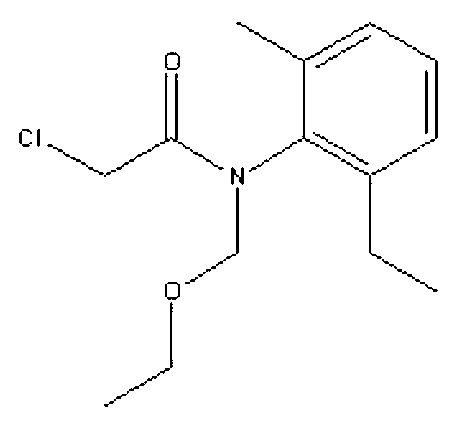Bacterium capable of degrading herbicide acetochlor and application thereof
A technology of acetochlor and bacterial agents, applied in the field of bacteria that degrades the herbicide acetochlor, can solve environmental pollution, farmland soil and groundwater pollution, serious problems, etc.
- Summary
- Abstract
- Description
- Claims
- Application Information
AI Technical Summary
Problems solved by technology
Method used
Image
Examples
Embodiment 1
[0038] Example 1, Isolation and Identification of Mycobacterium sp. YCA11CGMCC No.7771
[0039] 1. Isolation of acetochlor-degrading bacteria YCA11
[0040] Add 5g of soil sample (collected from the farmland polluted by the herbicide acetochlor in Beijing, China) to 50mL of the enriched culture solution with acetochlor concentration of 300mg / L, culture with shaking at 28°C and 200r / min for 7 days, and absorb 5mL of the culture solution Transfer to the enrichment medium with acetochlor concentration of 500mg / L, and continue to culture for 7 days, such continuous enrichment and culture for 5 times, the concentration of acetochlor is 300, 500, 700, 900 and 1100mg / L. After the enrichment is completed, take the enrichment solution with acetochlor concentration of 1100mg / L for serial dilution, spread evenly on the inorganic salt solid medium with the same concentration of acetochlor, and culture at 28°C. After a single colony trail appears on the plate, Pick a larger single colony ...
Embodiment 2
[0063] Example 2, Quantitative Determination of Acetochlor Degradation Ability of Mycobacterium sp. YCA11CGMCC No.7771
[0064] 1. Preparation of standard curve for acetochlor determination
[0065] The acetochlor standard (purchased from Fluka) was prepared into a series of standard solutions with a concentration of 10, 20, 40, 60, 80, and 100 mg / L with methanol, and the acetochlor standard with different concentrations was determined by high performance liquid chromatography (HPLC). The peak area of the product was repeated 3 times. With the concentration of acetochlor as the abscissa and the peak area as the ordinate, draw the acetochlor standard curve.
[0066] The detection conditions are as follows:
[0067] Detection system: Agilent1100Series. Chromatographic column: C18Diamosil TM Reversed-phase column, 250mm×4.6mm, particle size 5μm. Chromatographic conditions: mobile phase: methanol: water = 80: 20 (v / v), water adjusted to pH = 3 with glacial acetic acid; dete...
PUM
 Login to View More
Login to View More Abstract
Description
Claims
Application Information
 Login to View More
Login to View More - R&D Engineer
- R&D Manager
- IP Professional
- Industry Leading Data Capabilities
- Powerful AI technology
- Patent DNA Extraction
Browse by: Latest US Patents, China's latest patents, Technical Efficacy Thesaurus, Application Domain, Technology Topic, Popular Technical Reports.
© 2024 PatSnap. All rights reserved.Legal|Privacy policy|Modern Slavery Act Transparency Statement|Sitemap|About US| Contact US: help@patsnap.com










